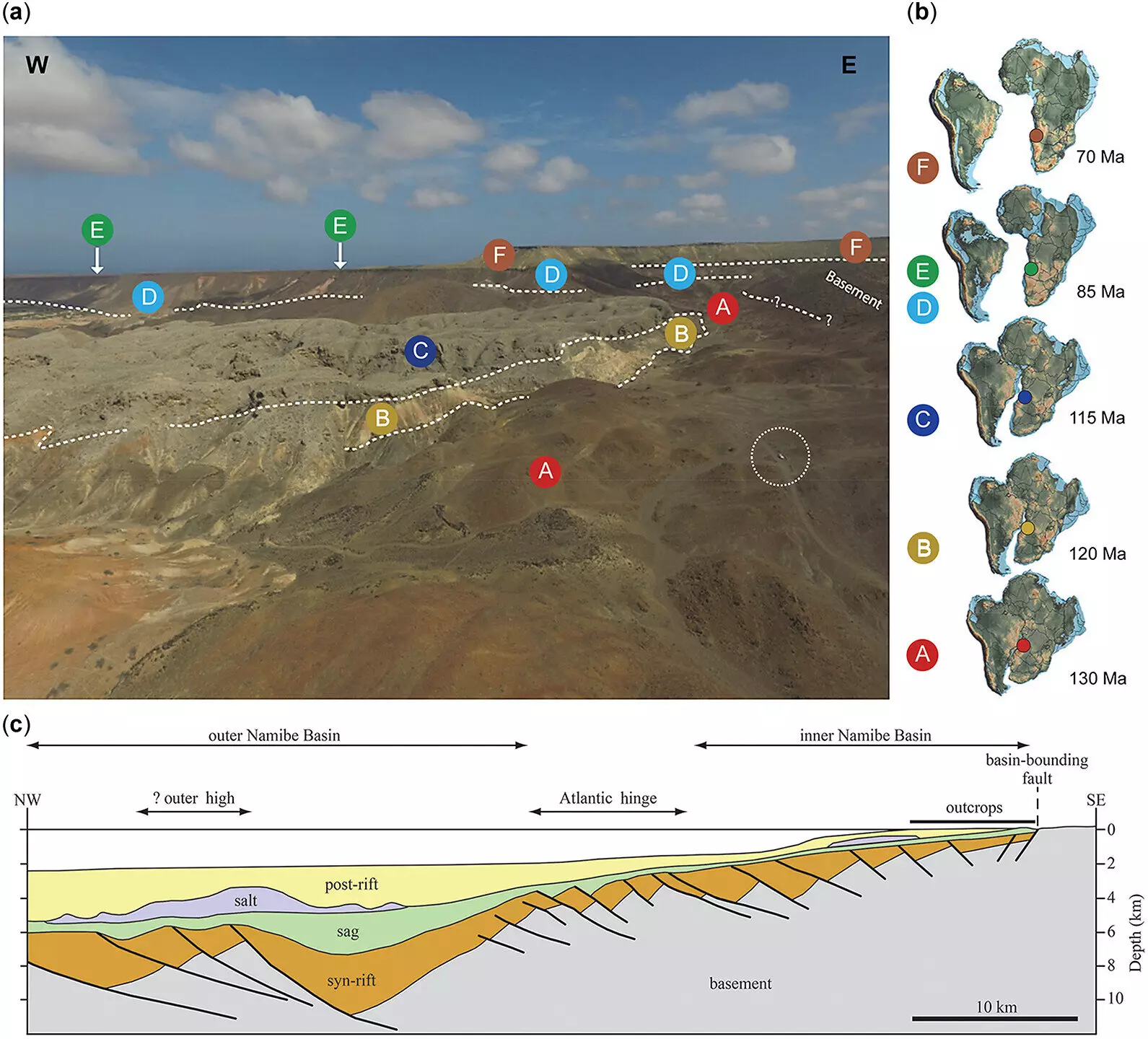Angola, located on the southern coast of Africa, presents a rare opportunity to witness a key part of Earth’s history. Ancient rocks and fossils discovered in this region provide a clear picture of the splitting of South America and Africa, and the subsequent formation of the South Atlantic Ocean. Unlike other parts of the world where evidence of this geological event is fragmented, Angola offers a comprehensive view of the continents moving apart and the opening of the ocean.
Around 140 million years ago, Africa and South America began to drift apart, creating rifts in the Earth’s crust. Magma from the mantle rose to the surface, forming new oceanic crust and pushing the continents away from each other. Over time, the South Atlantic Ocean emerged, filling the gap between the newly-formed landmasses. The rocks and fossils found in Angola date back from 130 million years ago to 71 million years ago, providing a detailed timeline of this momentous event in Earth’s history.
Researchers, including a team from SMU, have been studying the rock formations in Angola’s Namibe Province since 2005. By analyzing sediments, volcanic outpourings, faults, and marine fossils, they have been able to piece together the story of the separation of the continents. The presence of large marine reptiles from the late Cretaceous Period indicates the completion of the South Atlantic Ocean and the widening of the ocean.
The research in Angola involved collaboration between paleontologists, geologists, and experts from various fields. By studying the rocks, fossils, and sediments found in eight different locations along the Angolan coast, the team was able to reconstruct the geological history of the region. This interdisciplinary approach allowed the researchers to track the evolution of the landscape from a time when there was no ocean, to the formation of the South Atlantic Ocean.
Many of the ancient fossils discovered in Angola are now on display at the Smithsonian’s National Museum of Natural History as part of the “Sea Monsters Unearthed: Life in Angola’s Ancient Seas” exhibit. This exhibit, co-produced with SMU, showcases the unique marine reptiles that once inhabited the region during the Cretaceous Period. Through these fossils, visitors can learn about the evolution of life in the ancient seas of Angola.
The rocks and fossils found in Angola provide a valuable insight into Earth’s past, specifically the splitting of continents and the formation of the South Atlantic Ocean. This comprehensive geological record offers researchers and the public alike a unique opportunity to explore and understand the forces that shaped our planet millions of years ago. By studying the ancient rocks and fossils in Angola, we can continue to uncover the mysteries of our planet’s geological history.


Leave a Reply